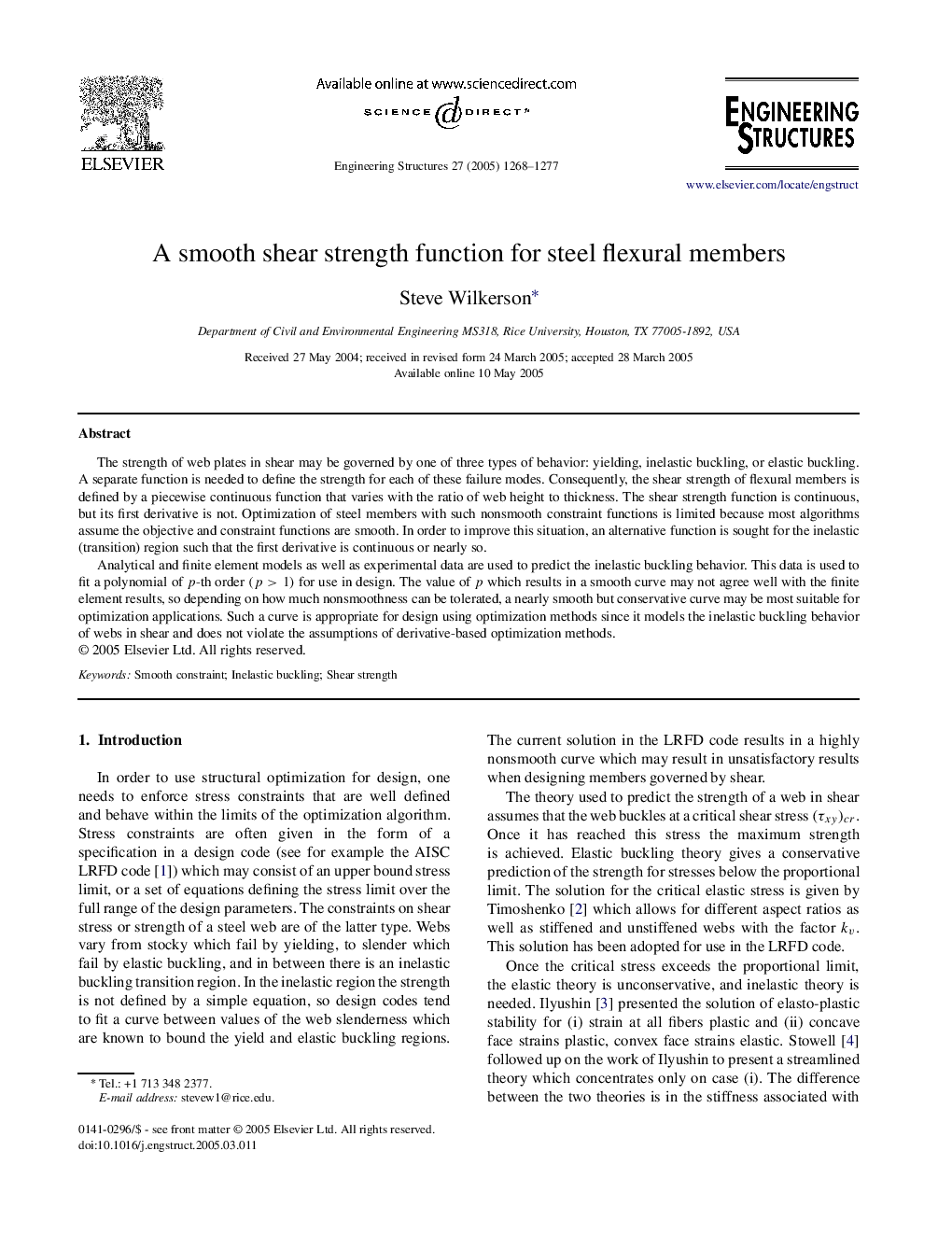| Article ID | Journal | Published Year | Pages | File Type |
|---|---|---|---|---|
| 10287074 | Engineering Structures | 2005 | 10 Pages |
Abstract
Analytical and finite element models as well as experimental data are used to predict the inelastic buckling behavior. This data is used to fit a polynomial of p-th order (p>1) for use in design. The value of p which results in a smooth curve may not agree well with the finite element results, so depending on how much nonsmoothness can be tolerated, a nearly smooth but conservative curve may be most suitable for optimization applications. Such a curve is appropriate for design using optimization methods since it models the inelastic buckling behavior of webs in shear and does not violate the assumptions of derivative-based optimization methods.
Keywords
Related Topics
Physical Sciences and Engineering
Earth and Planetary Sciences
Geotechnical Engineering and Engineering Geology
Authors
Steve Wilkerson,
